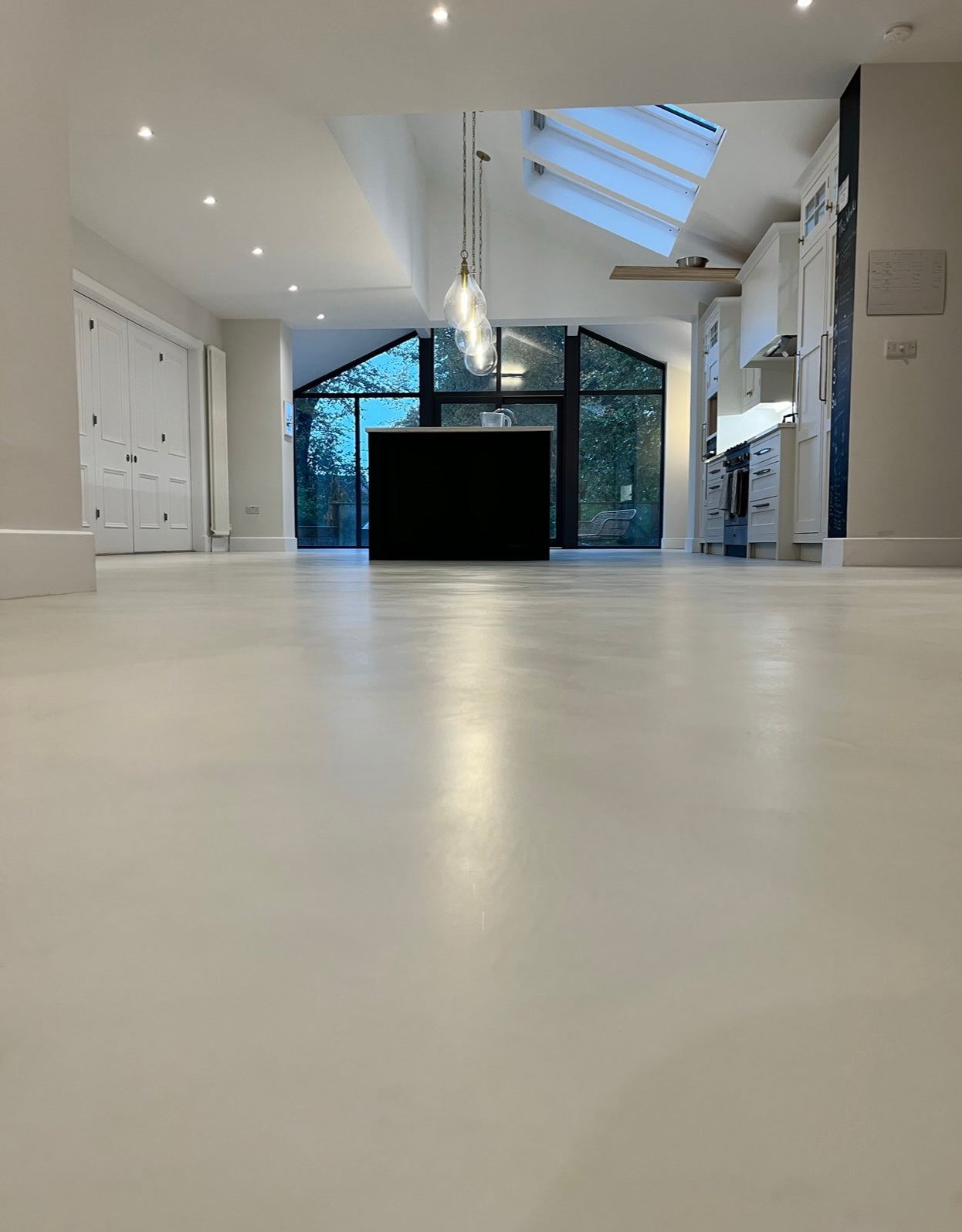How Much Does Microcement Cost? All You Need to Know

Share
- Eco-friendly
- Home Decor
- Home Renovation
- Interior Design
- Interior styles
- Microcement
- Microcement Application
- Microcemento
- Property Developement
- Water-resistant
As a material with rising popularity in recent years, Microcement is becoming an in-demand material in both new-built homes and renovation projects, as its aesthetic appeal and versatility complement a wide range of design trends with contemporary appeal.
Depending on what project it is used for, where the address is and how big of a surface it's applied on, a lot of factors can affect the total cost of the material and the application.
Here’s a breakdown of everything that needs to be considered:
-
Material Costs
The material cost is one of the main costs of the project, and a lot can depend on the quality, brand, and availability which are mostly dependent on the supplier. Certain factors specific to the project will affect the cost of the material, such as the colour and the complexity of the application.
Our Microcement Kits are one of the most cost-effective kits on the market, as it’s portioned to cover per square meterage, instead having to purchase the full-sized components.
Click on the links to explore the Allover and Continuo Microcement Kits.
-
Preparation Costs
Preparation costs can differ from project to project, and a lot depends on the state of the substrate and the work it needs before the priming and the application.
Generally, for older buildings, the substrate may need more extensive preparation, such as strengthening timber joints or even levelling the floors, despite the fact that Microcement can be applied on virtually any substrate so long as any damages are repaired.
Spaces where little preparation is required, usually don’t include much additional cost on that part.
-
Labor Costs
When it comes to labour costs, the major factor influencing it can be the experience of the applicator, the complexity of the finish and the size and place of the project.
An application with a simple, uniform finish and or an intricate pattern will have very different costs. Larger projects where even more applicators are required to work will also have a different cost per sqm. Different projects can require a different level of skill and therefore, cost.
To understand the application of Microcement application, and learn the basics, check out our beginner course!
For those who already have experience and want to learn advanced techniques, we recommend our full 3-day Microcement Course!
-
Sealing and Finishing Costs
Depending on the type of sealer that is used, and any special quality it may have (such as heat resistance), it could mean a slightly higher cost. Any other extra finishes or treatments, like anti-slip coatings for wet areas, can all increase the cost.
-
Additional Factors Affecting Costs
Project Size: Larger projects often benefit from economies of scale, as the cost per sqm will be smaller. Smaller projects on the other hand may have higher costs as the fixed costs of setting up and mobilisation are consistent.
Design Complexity: Simple, uniform applications are less expensive than intricate designs or multi-coloured finishes. Custom patterns, logos, or artistic effects require more time and expertise, increasing costs.
Location: Projects within are where the cost of living is higher, or where there is a shortage or high demand for skilled labour.
Thickness of Application: Depending on the type of application, more material may be needed to achieve the desired finish, which may require more material.
Contractor Experience: For certain projects some more skilled or experienced may be required, whether that means an intricate pattern or the application over underfloor heating.
-
Maintenance Costs
While not part of the initial application cost, it's important to consider long-term maintenance. Microcement surfaces are low maintenance, but periodic resealing (every 5 years depending on wear and exposure) is necessary to maintain their appearance and durability. Resealing costs are typically lower than the initial sealing.
Conclusion
The cost of any Microcement installation can vary based on the preparation, material and skill requirements. It also depends on the size and location of the project, as those are important factors affecting the final cost.
Understanding and calculating for these factors can help budget effectively for your next Microcement project, to make the most out of the finish!
If you are interested in hiring a professional for your next project, email to sales@imperaitalia.com.
Photo credit to DQ Surface Designs
@dq_surface_designs_training
